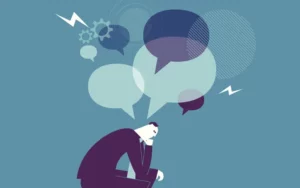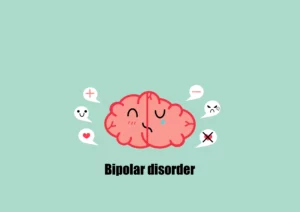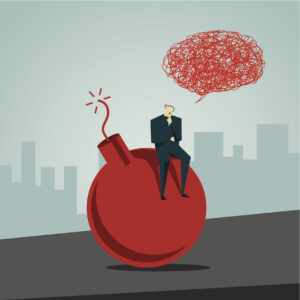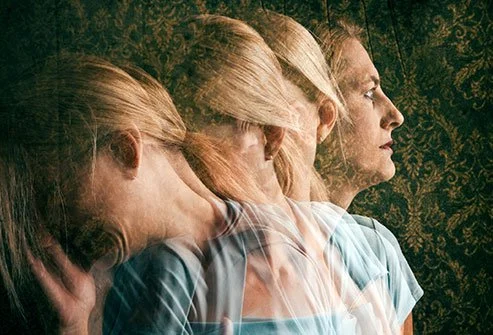There are 12 types of bipolar disorder, and it can be difficult to understand your diagnosis if you don’t know what each type entails. This blog post will provide a brief description of each type of bipolar disorder, as well as some key symptoms that are associated with each one. If you think you may have bipolar disorder, it is important to seek professional help to get the best treatment possible.
Contents
- 1 Defining Bipolar Disorder
- 2 10 Types Of Bipolar Disorder
- 3 Common Signs Of Bipolar Disorder
- 4 Diagnosis For Bipolar Disorder
- 4.1 The Diagnostic and Statistical Manual of Mental Disorders
- 4.2 Bipolar Disorder Diagnostic Criteria
- 4.3 The Mental Health Screening Questionnaire
- 4.4 The Mood Disorder Questionnaire
- 4.5 The Hamilton Depression Rating Scale
- 4.6 The Young Mania Rating Scale
- 4.7 The Zung Self-Rating Depression Scale
- 4.8 The Hamilton Depression Rating Scale
- 4.9 The Clinical Global Impression – Severity Scale
- 5 Treatment Options
- 6 Conclusion
Defining Bipolar Disorder
Bipolar disorder is a mental illness that is characterized by extreme swings in mood and energy levels. These swings can be very severe, and they can last for long periods of time (weeks, months, or even years). People with bipolar disorder often experience periods of depression, where they feel hopeless and helpless, followed by periods of mania, where they feel excessively happy and energized. In between these two extremes are what are known as “mixed states,” where a person experiences both depression and mania at the same time.
It is important to know that bipolar disorder is not simply a case of “ups and downs.” The mood swings associated with this illness are much more extreme than the day-to-day ups and downs that everyone experiences. Bipolar disorder can be very debilitating, and it can even lead to suicide if it is not treated properly.
10 Types Of Bipolar Disorder

There are 11 different types of bipolar disorder, each with its own set of symptoms. Here is a brief overview of each type:
Bipolar I Disorder
This type of bipolar disorder is characterized by manic episodes that last for at least seven days, or by manic episodes that are so severe that hospitalization is necessary. People with bipolar I disorder also often experience major depressive episodes, although these can be less severe than manic episodes.
Bipolar I Disorder can also be characterized by “mixed states,” where a person experiences both depression and mania at the same time. It can be difficult to function normally when in a mixed state, and it can be very dangerous if left untreated.
Bipolar II Disorder
Bipolar II disorder is similar to bipolar I disorder. However, the manic episodes are not as severe and do not last as long. People with bipolar II disorder usually experience more depressive episodes than people with Bipolar I Disorder.
They also often experience what is known as “hypomanic episodes,” which are periods where they feel excessively happy and energized, but these episodes do not last as long or cause as much impairment as manic episodes do. These episodes can still be disruptive to a person’s life, and they can still be dangerous if left untreated.
Rapid cycling bipolar disorder
People with rapid cycling bipolar disorder experience four or more episodes of mania or depression within 12 months. These episodes can be very severe, and they can make it difficult for a person to function normally in their day-to-day life.
This disorder is also associated with an increased risk of suicide, as well as an increased risk of substance abuse. If you think you may have rapid cycling bipolar disorder, it is important to seek professional help as soon as possible.
Cyclothymic Disorder
Cyclothymic disorder is a milder form of bipolar disorder. It is characterized by both hypomanic and depressive symptoms, but these symptoms are not as severe as those seen in bipolar I or II disorder.
People with cyclothymic disorder experience episodes of hypomania, as well as periods of depression. These episodes are not as severe as those experienced by people with bipolar I or II disorder.
However, people with cyclothymic disorder often have a hard time functioning normally in their day-to-day lives due to the constant mood swings. If left untreated, cyclothymic disorder can develop into more severe forms of bipolar disorder.
Atypical bipolar disorder
Atypical bipolar disorder is characterized by manic or depressive episodes that do not follow the typical patterns associated with other types of bipolar disorder. These episodes can be triggered by external events, such as a major life change or a stressful situation.
This type of bipolar disorder can be very difficult to diagnose, because the symptoms may not be easily recognizable as being part of a mental illness. It is important to get help from a mental health professional if you think you may be experiencing atypical bipolar disorder.
Mixed bipolar disorder
Mixed bipolar disorder is characterized by both manic and depressive episodes that occur at the same time, or in quick succession. This can make it very difficult for a person to function normally, and it can be very dangerous if left untreated.
This disorder is characterized by symptoms that do not fit neatly into any one category, and it can be very difficult to diagnose. If you think you may be experiencing mixed bipolar disorder, it is important to seek help from a mental health professional.
Postpartum bipolar disorder
Postpartum bipolar disorder is a type of bipolar disorder that is specific to women who have recently given birth. This type of bipolar disorder is characterized by severe mood swings, which can include both depressive and manic episodes. These episodes can occur during pregnancy, or after the baby is born.
This is different from postpartum depression as it is much more severe, and can last for several months after the baby is born. It can have a very negative impact on the mother’s ability to care for her child, and it can even lead to thoughts of suicide.
This disorder may also be at risk of harming the baby, and further lead to more severe disorders such as postpartum psychosis.
Substance-induced bipolar disorder
Substance-induced bipolar disorder is a type of bipolar disorder that is caused by the use of drugs or alcohol. This type of bipolar disorder can be difficult to treat because the person needs to stop using substances before they can start treatment for the bipolar disorder. Most typical types of substances that can lead to substance-induced bipolar disorder are alcohol, cocaine, and amphetamines.
This disorder can also be difficult to diagnose because the symptoms can be similar to those of other mental illnesses. It is similar to other types of bipolar disorder in that it is characterized by periods of mania and depression.
It can further be complicated by the fact that people who abuse substances are often reluctant to admit that they have a problem. This can make it difficult to get them the help they need.
Seasonal Bipolar Disorder
Seasonal affective disorder (SAD) is a form of depression, as well as bipolar disorder that occurs during the fall and winter months when there is less sunlight. It is characterized by feelings of sadness, fatigue, and social withdrawal. People with SAD may also experience manic episodes during other seasons, but these are less common
For example, a person with seasonal bipolar disorder may become depressed during the winter months, and then experience a manic episode in the spring. This can be very disruptive to a person’s life. It can also make it difficult to function normally during certain times of the year.
Sudden fluctuations in weather can contribute to SAD, as can changes in daylight savings time. This can have a major impact on a person’s ability to function normally during the winter months.
Bipolar NOS
Bipolar NOS (not otherwise specified) is a type of bipolar disorder that does not meet the criteria for any other specific type. It is characterized by symptoms that are similar to those seen in bipolar I or II disorder, but do not last as long or are not as severe. Unspecified bipolar and related disorders are the catch-all category for types of bipolar disorder that do not fit into any of the other categories.
This includes types of bipolar disorder that are characterized by symptoms that are less severe, or that do not last as long as the symptoms associated with other types of bipolar disorder.
If you think you may have any type of bipolar disorder, it is important to seek professional help in order to get the best treatment possible. There are many effective treatments available, and with the help of a mental health professional, you can find the one that is right for you.
Common Signs Of Bipolar Disorder

Now that we know there are different types of bipolar disorder, let’s take a look at some common signs. It’s important to remember that not everyone will experience all of these symptoms, and the severity of symptoms can vary from person to person.
Some people with bipolar disorder may only experience mild symptoms, while others may have more severe symptoms that interfere with their ability to function normally. The most important thing is to be aware of the potential signs so that you can seek help if you or someone you know is experiencing them.
- feeling highs and lows in mood (euphoria followed by depression)
- having an inflated sense of self-esteem or grandiosity
- being easily distractible or having racing thoughts
- being impulsive or engaging in risky behaviors
- having difficulty sleeping or sleeping too much
- experiencing changes in appetite
- feeling fatigue or low energy
- feeling restlessness or agitation
- having difficulty concentrating
- feeling hopeless, worthless, or guilty
- having thoughts of death or suicide
If you are experience any of these symptoms, it is important to seek professional help. Bipolar disorder is a serious mental illness that can be effectively treated with medication and therapy. With the help of a mental health professional, you can learn to manage your symptoms and live a healthy and fulfilling life.
Diagnosis For Bipolar Disorder
The first step in getting a diagnosis of bipolar disorder is to see a mental health professional. They will ask you about your symptoms and family history, and they may also order a physical exam to rule out other medical conditions that could be causing your symptoms.

If your doctor suspects that you have bipolar disorder, they may refer you to a psychiatrist for further evaluation. A psychiatrist is a medical doctor who specializes in the diagnosis and treatment of mental health conditions.
They will ask you about your symptoms and conduct a psychological evaluation to determine if you meet the criteria for bipolar disorder. Some of the most common tools, tests, and techniques used to diagnose bipolar include:
The Diagnostic and Statistical Manual of Mental Disorders
The Diagnostic and Statistical Manual of Mental Disorders (DSM) is a book that contains the criteria for diagnosing mental disorders. It is used by mental health professionals to diagnose bipolar disorder and other mental disorders.
DMS-5 is the most recent edition of the DSM, and it contains several changes to the criteria for diagnosing bipolar disorder. The proposed criteria for bipolar disorder in the DSM-V are:
A. A period of abnormally and persistently elevated, expansive, or irritable mood, lasting at least one week (or any duration if hospitalization is necessary).
B. During the period of abnormal mood, three (or more) of the following symptoms must have persisted (four if the mood is only irritable):
- inflated self-esteem or grandiosity
- decreased need for sleep
- increased talkativeness
- flight of ideas or racing thoughts
- distractibility
- increase in goal-oriented activity (either socially, at work or school, or sexually) or psychomotor agitation
C. The abnormal mood and symptoms cause clinically significant distress or impairment in social, occupational, or other important areas of functioning.
D. The episode is not due to the direct physiological effects of a substance (e.g., a drug of abuse, a medication) or a general medical condition (e.g., hypothyroidism).
E. The disturbance is not better explained by bereavement (i.e., after the loss of a loved one, the symptoms of depression and anxiety associated with grief are not better explained by a Major Depressive Episode).
A licensed professional can help you assess and diagnose these criteria in case you have any of the above symptoms.
Bipolar Disorder Diagnostic Criteria
Several criteria must be met in order to be diagnosed wtoith bipolar disorder. These include:
- having had at least one manic episode or mixed episode
- having had at least one hypomanic episode (in the case of bipolar II disorder)
- symptoms that have caused significant distress or impairment in important areas of functioning
- not meeting the criteria for any other mental disorder that could be causing your symptoms (e.g., schizophrenia, major depressive disorder, etc.)
If an individual meets the criteria for bipolar disorder, the mental health professional will then assess whether the individual meets the criteria for a specific subtype of bipolar disorder.
The Mental Health Screening Questionnaire
The Mental Health Screening Questionnaire (MHSQ) is a tool used to screen for mental disorders. It is a self-report questionnaire that asks questions about your symptoms and how they have been affecting your life. It is not a diagnostic tool, but it can help to identify people who may benefit from further evaluation by a mental health professional.
The Mood Disorder Questionnaire
The Mood Disorder Questionnaire (MDQ) is a self-report questionnaire that asks questions about your symptoms and how they have been affecting your life. It has been found to be a reliable tool for diagnosing bipolar disorder.
The Hamilton Depression Rating Scale
The Hamilton Depression Rating Scale (HDRS) is a clinician-administered questionnaire that asks questions about your symptoms and how they have been affecting your life. It is used to assess the severity of depression and to monitor the progress of treatment.
The Young Mania Rating Scale
The Young Mania Rating Scale (YMRS) is a clinician-administered questionnaire that asks questions about your symptoms and how they have been affecting your life. It is used to assess the severity of mania and to monitor the progress of treatment.
The Zung Self-Rating Depression Scale
The Zung Self-Rating Depression Scale (SDS) is a self-report questionnaire that asks questions about your symptoms and how they have been affecting your life. It can help to identify people who may benefit from further evaluation by a mental health professional.
The Hamilton Depression Rating Scale
The Hamilton Depression Rating Scale (HRSD) is a tool used to assess the severity of depression. It is a clinician-administered questionnaire that asks questions about your symptoms and how they have been affecting your life. The HRSD can be used to diagnose bipolar disorder and other mental disorders.
The Clinical Global Impression – Severity Scale
The Clinical Global Impression – Severity Scale (CGI-S) is a clinician-administered scale that assesses the severity of mental illness. It can be used to diagnose bipolar disorder and other mental disorders.
In addition to the psychological evaluation, your healthcare provider may also recommend a physical exam and laboratory tests to rule out other medical conditions that may be causing your symptoms. Some examples of this may include thyroid tests, blood tests, and imaging studies.
If you are diagnosed with bipolar disorder, your healthcare provider will work with you to develop a treatment plan. This may include medication, psychotherapy, and lifestyle changes. The goal of treatment is to reduce the symptoms of the illness and improve functioning.
Treatment Options

Bipolar disorder is a treatable condition. With proper treatment, people with bipolar disorder can lead healthy and productive lives. If you think you or someone you know may have bipolar disorder, it is important to seek professional help.
Therapy
Therapy is the process of talking with a trained mental health professional to help you understand and manage your thoughts, feelings, and behaviors. Therapeutic intervention can be an effective treatment for bipolar disorder.
- Psychotherapy is a type of therapy that involves talking with a mental health professional to treat a mental illness. It can be used to treat bipolar disorder and other mental disorders.
- Cognitive behavioral therapy (CBT) is a type of psychotherapy that is effective in treating bipolar disorder. CBT helps people to change the negative thoughts and behaviors that are associated with the illness.
- Interpersonal and social rhythm therapy (IPSRT) is a type of psychotherapy that has been shown to be effective in treating bipolar disorder. IPSRT helps people to stabilize their daily routines and improve their social relationships.
- Dialectical behavior therapy (DBT) is a type of psychotherapy that has been shown to be effective in treating bipolar disorder. DBT helps people to manage their emotions and improve their relationships.
- Psychoeducation is a type of therapy that helps people to understand their illness and how to manage it. Psychoeducation can be used to treat bipolar disorder and other mental disorders.
- Support groups are also a good way to meet other people who have similar experiences. Support groups can provide you with information, resources, and support. There are many different types of support groups available, including online support groups.
The most appropriate approach of therapy is decided by the therapist and client’s mutual agreement and comfort. In addition, they will also monitor the bipolar types you have, as well as the severity of the symptoms.
Medication
Medication is a key part of treatment for bipolar disorder. Psychiatrist drugs can help to reduce the symptoms of the illness and improve functioning. Several different types of medication can be used to treat bipolar disorder. These include:
- Mood stabilizers are the most commonly prescribed type of medication for bipolar disorder. They help to even out the highs and lows associated with the illness. Examples of mood stabilizers include lithium, valproate, and carbamazepine.
- Antipsychotics are a type of medication that is used to treat the symptoms of psychosis. Psychosis is a mental state in which a person has lost touch with reality. Examples of antipsychotics include risperidone, olanzapine, and quetiapine.
- Antidepressants are a type of medication that is used to treat the symptoms of depression. Depression is a mood disorder that causes a persistent feeling of sadness and loss of interest. Examples of antidepressants include fluoxetine, sertraline, and bupropion.
- Anticonvulsants are a type of medication that is used to treat seizures. Seizures are sudden changes in behavior due to abnormal electrical activity in the brain. Examples of anticonvulsants include divalproex, lamotrigine, and topiramate.
If you decide to undertake medication, it is essential to get a valid prescription to access psychiatric drugs. It also gets important to monitor the side effects and efficacy of the medication on the body.
Lifestyle Changes
There are several lifestyle changes that can help to manage bipolar disorder. These include getting regular exercise, eating a healthy diet, getting enough sleep, and avoiding alcohol and drugs.
- Exercise is a good way to reduce stress and improve your mood. It can also help to increase your energy levels and improve your overall health.
- Eating a healthy diet is important for maintaining your mental health. Eating foods that are high in nutrients can help to improve your mood. It also decreases your risk of developing mental disorders.
- Getting enough sleep is important for maintaining your mental health. Lack of sleep can worsen the symptoms of bipolar disorder and other mental disorders.
- Avoiding alcohol and drugs is important for maintaining your mental health. Alcohol and drugs can worsen the symptoms of bipolar disorder and other mental disorders.
If you or someone you know has bipolar disorder, there are many treatment options available. Treatment can help to reduce the symptoms of the illness and improve functioning. With treatment, people with different types of bipolar disorder can live happy and healthy lives.
Conclusion
In conclusion, bipolar disorder causes a person to experience extreme highs and lows in their mood. There are several different types of bipolar disorder, each with its own set of symptoms. Treatment for bipolar disorder can include medication, psychotherapy, support groups, and lifestyle changes. With treatment, people with bipolar disorder can live happy and healthy lives.
For more information, please contact MantraCare. Bipolar disorder is a mental illness characterized by extreme shifts in mood, energy, and activity levels. If you have any queries regarding Online Bipolar Disorder Counseling experienced therapists at MantraCare can help: Book a trial Bipolar Disorder therapy session


